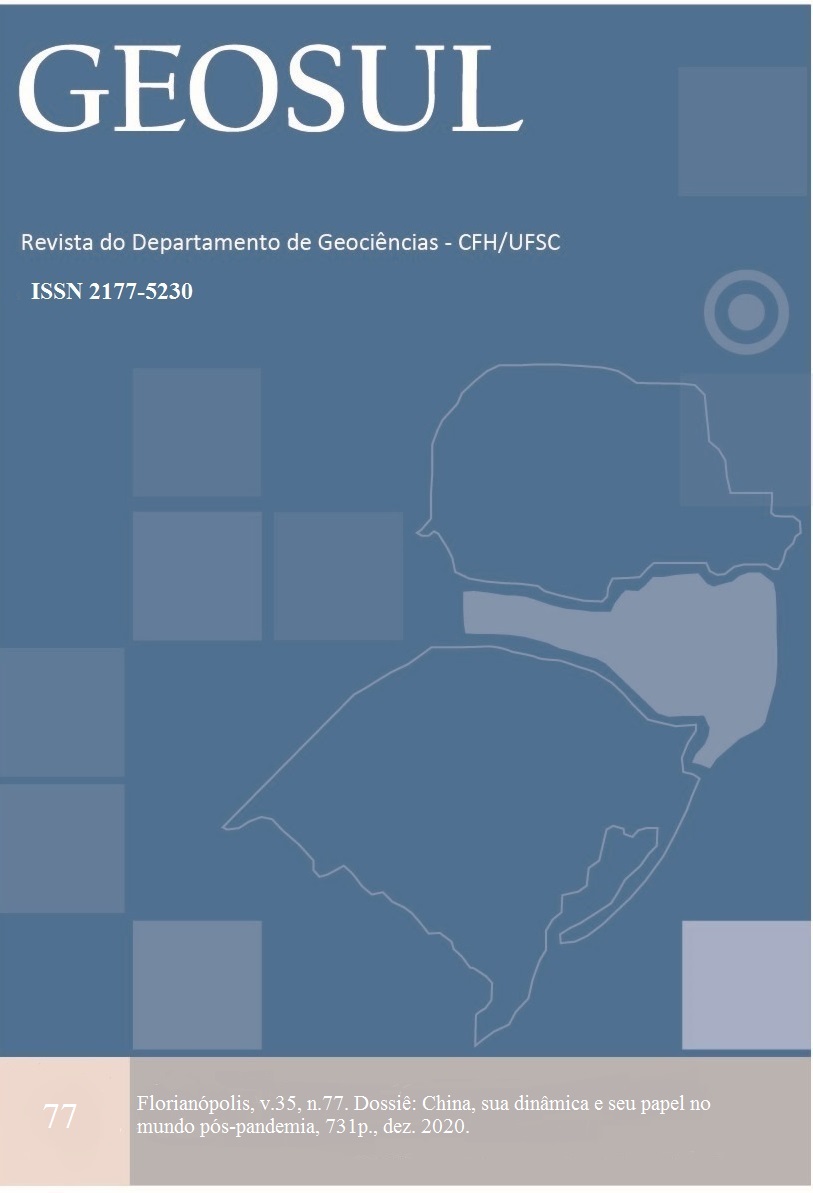The efforts to modernize the chinese nuclear arsenal: internal balancing and transformation in the contemporary international system
DOI:
https://doi.org/10.5007/2177-5230.2020v35n77p296Abstract
The article aims to analyze Chinese investments in its nuclear arsenal after the Cold War. It is argued that nuclear weapons modernization efforts are part of a process of "internal balancing" undertaken by China in relation to the United States of America. To develop this argument, the first section of this article discusses the phenomenon of "internal balancing", in order to clarify its conceptual and theoretical basis. Then, we carry out a brief historical review of the Chinese nuclear program during the Cold War. Finally, contemporary efforts to modernize Chinese nuclear arsenals are evaluated, in light of a theoretical model that allows the empirical verification of the phenomenon of internal balancing.
References
CHASE, Michael S.; ERICKSON, Andrew S.; YEAW, Christopher. Chinese Theater and strategic missile force modernization and its implications for the United States, Journal of Strategic Studies, v. 32, n. 1, p. 67-114, 2009.
BIN, Li. Paper tiger with whitened teeth. China Security, p. 78 – 89, Autumn 2006.
DEPARTMENT OF DEFENSE OF THE UNITED STATES OF AMERICA; Annual report to Congress: military and security developments involving the People’s Republic of China, 2010.
FRAVEL, M. Taylor; MEDEIROS, Evan S. China’s search for assured retaliation. The evolution of Chinese nuclear strategy and force structure. International Security, v. 35, n. 2, p. 48–87, Fall 2010.
GILL, Bates; MULVENON, James; STOKES, Mark. The Chinese Second Artillery Corps: transition to credible deterrence. In: MULVENON, James; YANG, Andrew (Eds.). The People's Liberation Army as organization. RAND, 2002, p. 510-586.
GILL, Bates; NI, Adam. The People’s Liberation Army Rocket Force: reshaping China’s approach to strategic deterrence, Australian Journal of International Affairs, 2019. Disponível em: https://doi.org/10.1080/10357718.2018.1545831. Acesso em 26 set. 2020.
GOLDSTEIN, Avery. Deterrence and security in the 21st century. China, Britain, France and the enduring legacy of nuclear revolution. Stanford: Stanford University Press, 2000.
JEFFREY, G. The minimal means of reprisal. China’s search for security in the nuclear age. Cambridge: The MIT Press, 2007.
JOHNSTON, Alastair Iain. China's New "Old Thinking": The Concept of Limited Deterrence. International Security, v. 20, n. 3, p. 5-42, Winter, 1995-1996.
KRISTENSEN, Hans M.; NORRIS, Robert S.; MCKINZIE, Matthew G. Chinese nuclear forces and U.S. nuclear war planning. The Federation of American Scientists & The Natural Resources Defense Council. November 2006.
KRISTENSEN, Hans M.; NORRIS, Robert S. Global nuclear weapons inventories, 1945-2010. Bulletin of the Atomic Scientists, v. 66, n. 4, p. 77-83, 2010.
KRISTENSEN, Hans M.; NORRIS, Robert S. Chinese nuclear forces, 2011. Bulletin of the Atomic Scientists, v. 67, n. 6, p. 81-87, 2011.
KRISTENSEN, Hans; KORDA, Matt. Chinese nuclear forces, 2019. Bulletin of the Atomic Scientists 2019, v. 75, n. 4, p. 171–178, 2019. Disponível em: https://www.tandfonline.com/doi/pdf/10.1080/00963402.2019.1628511?needAccess=true. Acesso em 21 mai. 2020
KULACKI, Gregory. China’s Nuclear Arsenal: status and evolution. Union of concerned scientists. October 2011.
LEWIS, Wilson John & LITAI, Xue. China builds the bomb. Stanford: Stanford University Press, 1988.
LEWIS, Wilson John; HUA, Di. China ballistic missile programs. Technologies, strategies, goals. International Security, v. 17, n. 2, Fall 1992.
LEWIS, Wilson John & LITAI, Xue. China’s strategic seapower. The politics of force modernization in the nuclear world. Stanford: Stanford University Press, 1994.
LIEBER, Keir; PRESS, Daryl. The end of mad? The nuclear dimension of U.S. primacy. International Security, v. 30, n. 4, p. 7-44, Spring 2006.
LIEBER, Keir; PRESS, Daryl. U.S. nuclear primacy and the future of the Chinese deterrent. China Security, p.66 -89, Winter 2007.
WORTZEL, Larry M. China’s nuclear forces: operations, training, doctrine, command, control, and campaign planning. May 2007. Available at: www.StrategicStudiesInstitute.army.mil. Access on 10th October, 2011.
YOSHIHARA, Toshi; HOLMES, James. Red star over the Pacific. China’s rise and the challenge to U.S. marine strategy. Annapolis: Naval Institute Press, 2010.
YUNZHU, Yao. Chinese Nuclear Policy and the future of minimum deterrence. Strategic Insights, v.4 , n. 9, September 2005.
ZHANG, Hui. The defensive nature of China's "underground great wall". Bulletin of the Atomic Scientists. 16 January 2012.
Downloads
Published
Issue
Section
License

Este trabalho está licenciado com uma Licença Creative Commons - Atribuição 4.0 Internacional.





